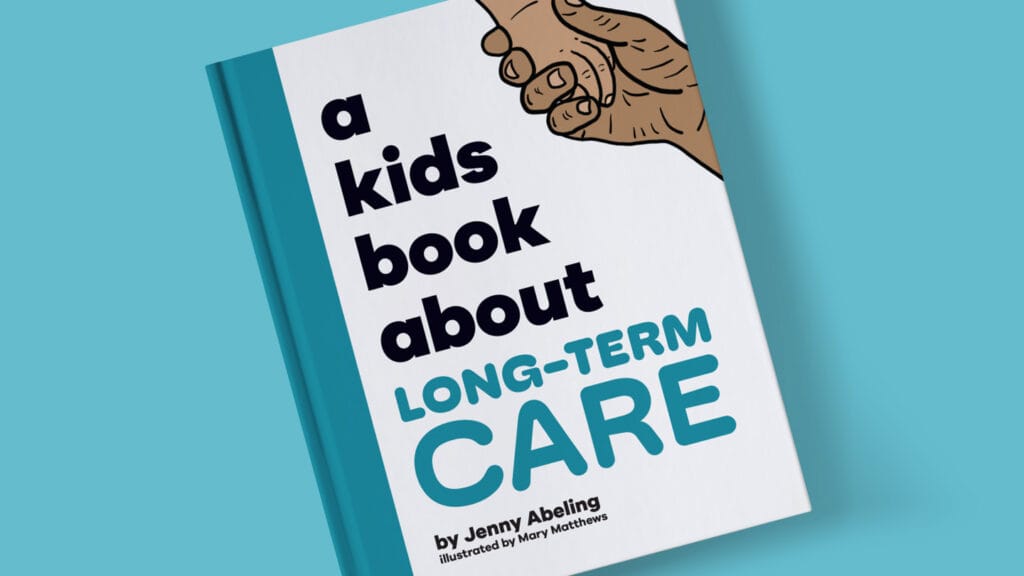
Long-term care would not be at the top of most lists of likely childrens’ book topics. But that didn’t stop author Jenny Abeling from vividly portraying the daily lives of residents and care workers for kids and their families.
Abeling had been working in long-term care for more than two decades when the COVID-19 pandemic brought lockdowns and isolation to nursing homes across the country. The heightened isolation only emphasized how foreign and frightening the setting can be for those who aren’t familiar with it — especially children, she told McKnight’s.
“Care is happening in all of our families and all of our communities and it’s often not talked about,” she said. “It’s an unseen and unheard topic that doesn’t get much attention. So because of that, a lot of times when kids and families do come to facilities … where care is happening … because the conversation hasn’t occurred, it can be scary, confusing and avoided.”
Abeling partnered with illustrator Mary Matthews to create “A Kids Book About Long-Term Care”. They wanted to kickstart that conversation about long-term care — highlighting the diverse stories of residents and staff from all backgrounds.

Most of the people featured in the book’s colorful illustrations are based on real residents and workers whom Abeling and Matthews know.
“One goal I have for the book is to get it out into communities nationwide, whether that be for schools, through intergenerational programming or through facilities,” she explained. “When that all happens, we can have those conversations by using the book as the platform.”
Spreading the LTC story
The book is targeted toward kids aged 5 and up and intended to be a read-together book with parents or other significant adults in the child’s life. The book aims to break down the often complicated and confusing terminology of long-term care into something children can understand so they can recognize and be less frightened by what’s happening in the lives of loved ones in a skilled nursing facility.
Abeling has partnered with several advocacy groups to spread the word about the book. Groups such as Caring Across Generations, the SEIU, National Consumer Voice for Quality Long-Term Care, Bridge Meadows and Positive Approaches to Care pitched in to promote the book and are listed in a section of resources that readers can use to get involved in building connections with long-term care facilities and residents.
“The book is not the end. The book is the beginning,” Abeling said. “So you have this great conversation and then you and your adult go and find out, ‘Hey, what good works are these organizations doing that I can get involved in?’”
That the next step in getting the story of long-term care out into the world is to go beyond telling a story and into forging relationships, Abeling said. Providers should be focused on intergenerational programming — not just one-off events, but ongoing programs building relationships that provide comfort for nursing home residents and understanding to their local communities, she added.




